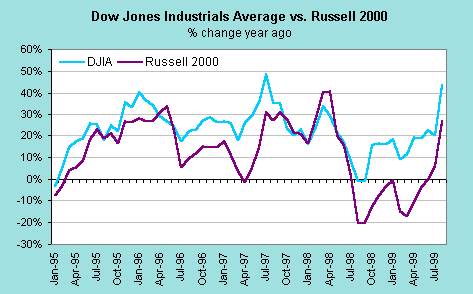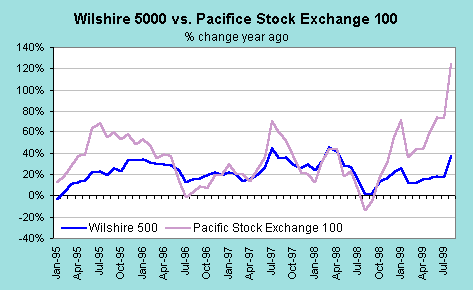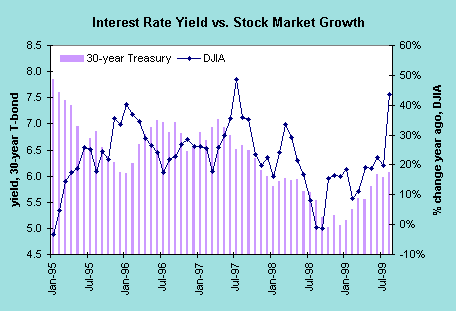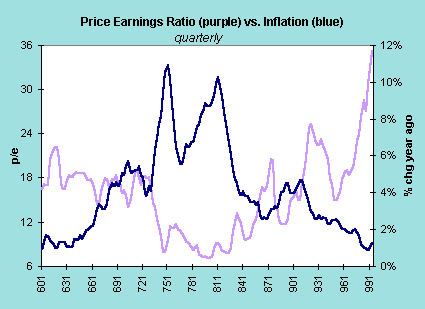By Evelina M. Tainer, Chief Economist
INDICATORS OF INFLATION
FEDERAL RESERVE POLICY
INTEREST RATES
STOCK PRICES

Yearly changes in the S&P 500 were similar to the growth in the NASDAQ composite index until the end of 1998 when the NASDAQ pulled sharply ahead. The S&P 500 and the NASDAQ composite index posted sharp year-over-year gains in August. Remember that stock prices tumbled sharply last year at this time.

In the past few years, the Dow Jones Industrials have easily surpassed the Russell 2000, the benchmark for small capitalization stocks. The gap widened sharply in mid-1998 and it has only begun to narrow. The Russell 2000 has a long recovery to even match last year's highs. The August improvement in the Russell reflects last year's debacle rather than a real recovery in the small cap sector this year.

The Wilshire 5000 is the most comprehensive measure of the stock market. Here it is compared with a very narrow measure of fashionable high tech stocks. Not surprisingly, the high tech stocks are zooming! Remember that August comparisons are skewed due to last year's stock market plunge during this month.

This chart reflects the inverse relationship between stock prices and interest rates -- most of the time! In some cases, stock prices rose even as interest rates were increasing.

The price earnings ratio reveals how much investors are paying for each dollar of earnings. For instance, a P/E of 30 means that investors are willing to pay $30 for each $1 earned by the company. The P/E varies by industry, so those high and low P/E's mean different things in different markets. On an economy-wide scale, the chart above shows that investors are willing to pay more for earnings as the inflation rate decreases. This makes sense, because each dollar of earnings has more "real" value. Nonetheless, the P/E ratio is high by historical standards even after accounting for the low inflation environment.